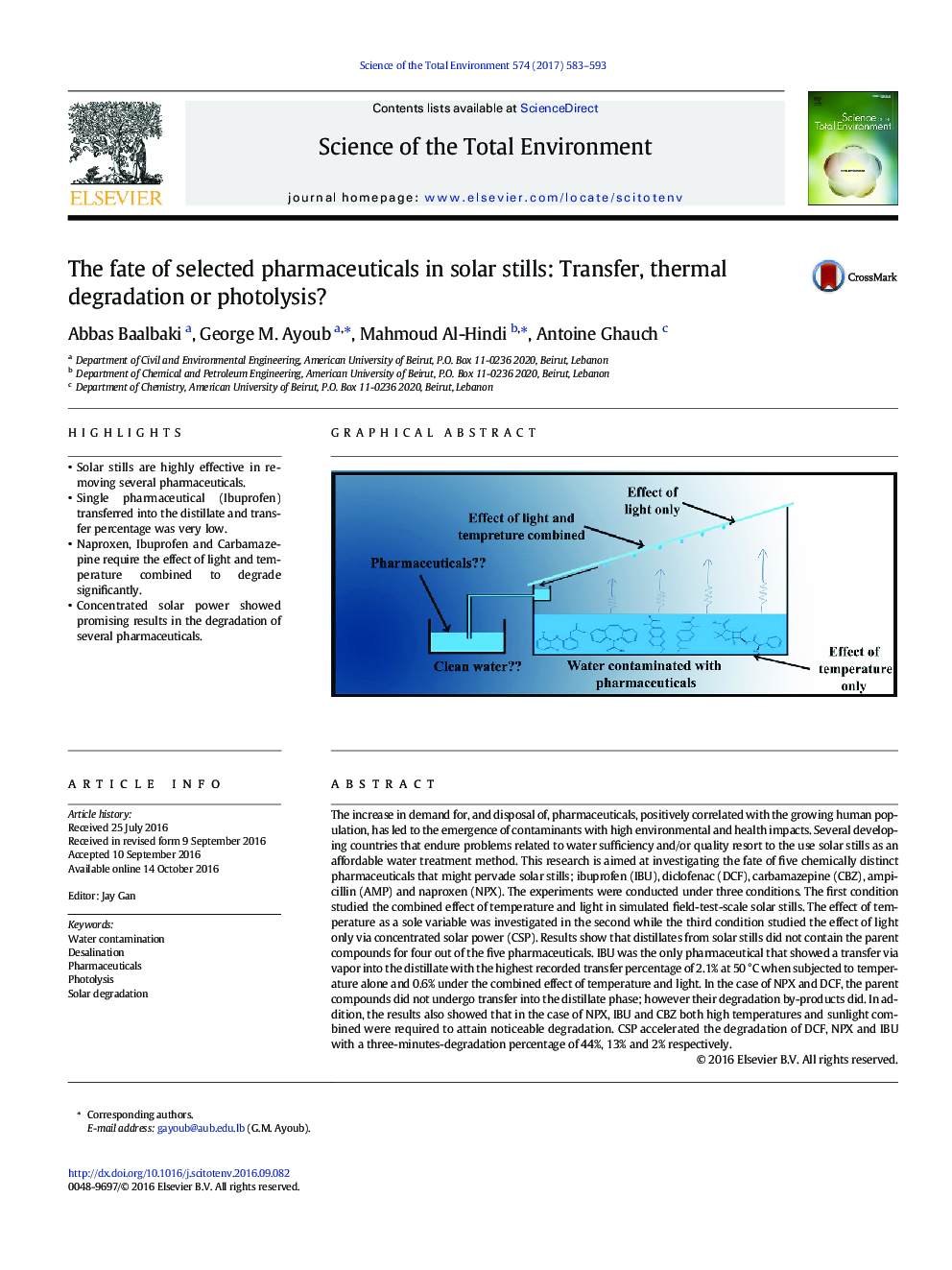| کد مقاله | کد نشریه | سال انتشار | مقاله انگلیسی | نسخه تمام متن |
|---|---|---|---|---|
| 6320274 | 1619717 | 2017 | 11 صفحه PDF | دانلود رایگان |
- Solar stills are highly effective in removing several pharmaceuticals.
- Single pharmaceutical (Ibuprofen) transferred into the distillate and transfer percentage was very low.
- Naproxen, Ibuprofen and Carbamazepine require the effect of light and temperature combined to degrade significantly.
- Concentrated solar power showed promising results in the degradation of several pharmaceuticals.
The increase in demand for, and disposal of, pharmaceuticals, positively correlated with the growing human population, has led to the emergence of contaminants with high environmental and health impacts. Several developing countries that endure problems related to water sufficiency and/or quality resort to the use solar stills as an affordable water treatment method. This research is aimed at investigating the fate of five chemically distinct pharmaceuticals that might pervade solar stills; ibuprofen (IBU), diclofenac (DCF), carbamazepine (CBZ), ampicillin (AMP) and naproxen (NPX). The experiments were conducted under three conditions. The first condition studied the combined effect of temperature and light in simulated field-test-scale solar stills. The effect of temperature as a sole variable was investigated in the second while the third condition studied the effect of light only via concentrated solar power (CSP). Results show that distillates from solar stills did not contain the parent compounds for four out of the five pharmaceuticals. IBU was the only pharmaceutical that showed a transfer via vapor into the distillate with the highest recorded transfer percentage of 2.1% at 50 °C when subjected to temperature alone and 0.6% under the combined effect of temperature and light. In the case of NPX and DCF, the parent compounds did not undergo transfer into the distillate phase; however their degradation by-products did. In addition, the results also showed that in the case of NPX, IBU and CBZ both high temperatures and sunlight combined were required to attain noticeable degradation. CSP accelerated the degradation of DCF, NPX and IBU with a three-minutes-degradation percentage of 44%, 13% and 2% respectively.
137
Journal: Science of The Total Environment - Volume 574, 1 January 2017, Pages 583-593
